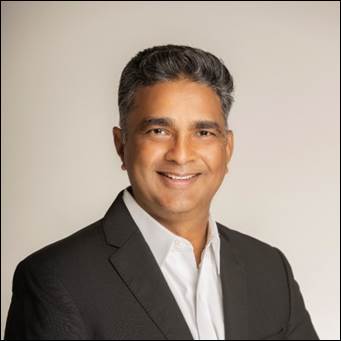
Ceremorphic, an industry leader in developing silicon systems was founded in April 2020 by industry veteran Dr. Venkat Mattela. Ceremorphic launched their first Development centre in Hyderabad to boost the country’s promising semiconductor ecosystem. Here is the exclusive interview with Dr. Venkat about company journey, product innovations, India’s semiconductor ecosystem and market strategy.
Ceremorphic’s journey and inspiration
Ceremorphic was founded in April 2020, after Redpine Signals’, a start-up that delivered breakthrough innovations and industry first products leading to the development of an ultra-low power wireless solution that outperformed products from wireless industry giants by as much as 26 times in energy efficiency, was sold to Silicon Laboratories, Inc., a US semiconductor company, for $308 million in March 2020.For over 15 years, Redpine was focused on developing advanced wireless technologies, creating industry-leading System-on-Chip (SoC) products that are now being used in mainstream products.
With Ceremorphic, we have identified the most pressing requirement in today’s high-performance computing era: reliability and energy consumption; and have already created many ground-breaking innovations. To date, the company has received over 100 patents and although Ceremorphic was officially founded in April 2020, the R&D efforts began three years earlier.
With patented technology, deep technical expertise and proven management, Ceremorphic today, is a mature supercomputing technology company with 150 employees and an engineering team that is highly seasoned and qualified. Company believes that product sustainability is possible only if the company owns and differentiates the underlying technology.
How is the product likely to disrupt the semiconductor space? Is the Indian ecosystem ready for semiconductor manufacturing: Perspective?
The semiconductor technology roadmap provides tools and nodes for developing advanced silicon products, and the 5nm node is a particularly efficient node for producing high gate density (approximately 40M gates in 1 sq. mm area) and high performance. A company can create exceedingly complicated and high-performance processors in an acceptable physical size, if they have access to this type of technology node. However, managing leakage power and reliability is a challenge with these nodes. These two issues, reliability, and energy efficiency are now restricting the adoption of high performance in the AI / ML sector.
Ceremorphic’s current technology portfolio, as well as the design of QS1 (The first chip in the Hierachical Learning Processor™ – HLP series) , will address the issues of dependability and energy efficiency, paving the path for an architecture that will enable Exascale performance, while maintaining a manageable power budget. This method will make high-performance computing systems inexpensive, allowing AI and machine learning applications to become widespread.
Now, with respect to manufacturing in India, there is a talent aspect and an infrastructure aspect. Talent is never an issue in India, but infrastructure and past proven experience are critical to achieving any meaningful outcome at scale. The ecosystem is improving in both of those areas, and we are very optimistic about seeing many significant outcomes in this space soon.
The motivation & idea behind setting Hyderabad as a location. What are the other geographies besides India and US that will be key markets for Ceremorphic
We previously founded a world-class wireless technology company (Redpine Signals, Inc.) in Hyderabad and sold it to a well-known US semiconductor company; and also have a strong past record as well as experience in building and managing a team out of Hyderabad. We have created over 130 fundamantal patents in the wireless space in Redpine Signals, Inc. and sold those assets to SLAB for $308M USD.
Also, since I am from Telangana and have studied in Hyderabad, I indeed have a strong cultural connect with the place. Additionally, if you see, the state of Telangana has been quite supportive of our vision and since all this is crucial to our progress, it makes it a perfect fit for Ceremorphic.
R&D and product development will be heavily influenced by the India Development Centre and it is already involved in the creation of architecture, algorithms, semiconductor design, and software tools. However, the product will be offered all over the world.
Go to market strategy for Ceremorphic in India
A product of QS1’s complexity necessitates a significant amount of effort. To create this product efficiently, we are utilising the talent and knowledge of the team in India.
Our GTM approach will be worldwide in scope, with India as a target market due to the importance of high-performance computing in the future of AI and machine learning. We aim to produce end goods for target sectors like Datacentre, AI Training, Automotive, Robotics, Metaverse processing and Life sciences, through our OEM network.
What is the talent strategy for growing the team here in India?
Today, Ceremorphic employs 150 people, out of which 140 are based out of India. By the end of the year, we plan to ramp this up to 250.And by the end of 2024, we expect to have over 300 employees working from the Hyderabad location.
We hire from across top engineering institutes, like IITs, BITs and NITs. We also attract lateral talent by providing an atmosphere in which they can lead larger teams and manage work of a considerably higher quality than what they are currently doing. Quality of work combined with the possibility of making a lot of money is a motivator that is well suited to people with experience.
How is Ceremorphic planning to align itself with the workforce of today, given the covid situation?
In India, we have a very clean and efficient infrastructure of 35,000 SFT space in Hyderabad with all ultra-modern network and computing systems. Since the company’s inception from April 2020, we have been operating from 26 cities in a remote manner with all our computing resources placed in Datacenters. Technically, we made significant strides. We have the team flexibility to manage this working remotely and in-person, and it is working very well for us. .Ownership and flexibility are tied in our approach and it is working well for us. We have employees who work from home, as well as in office.






